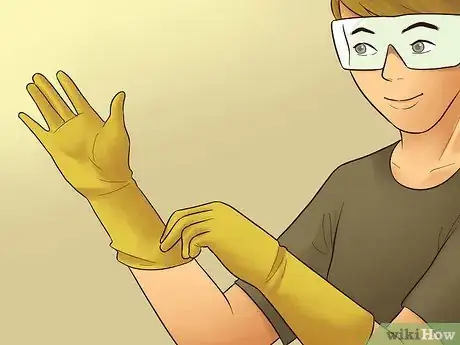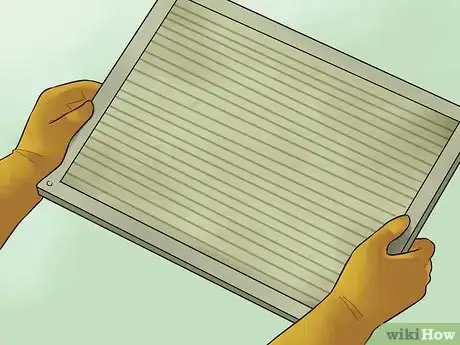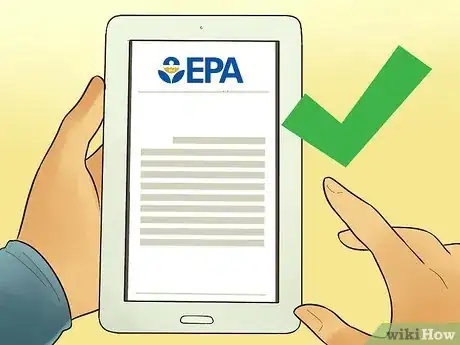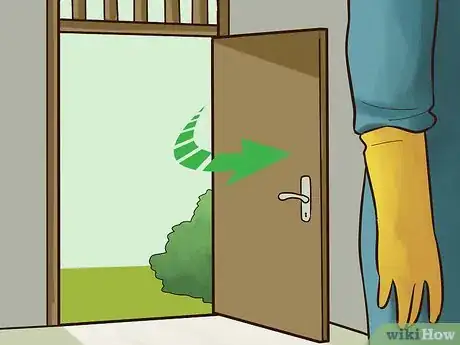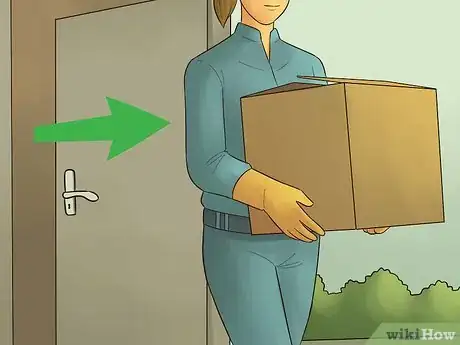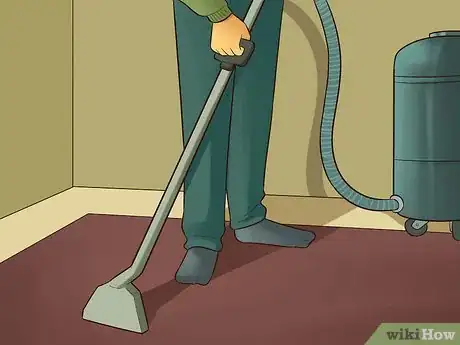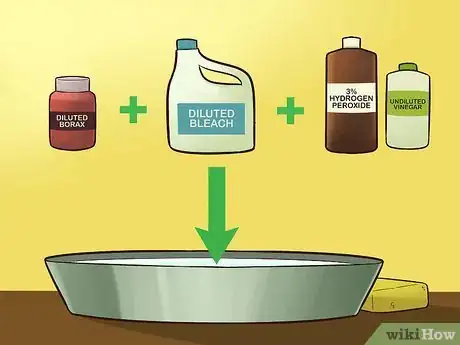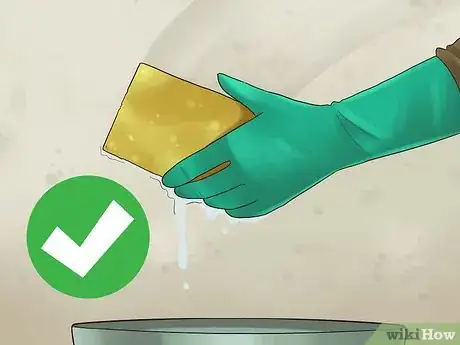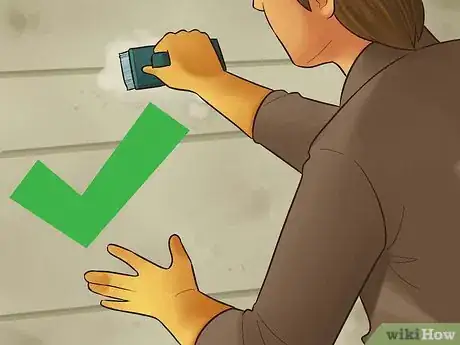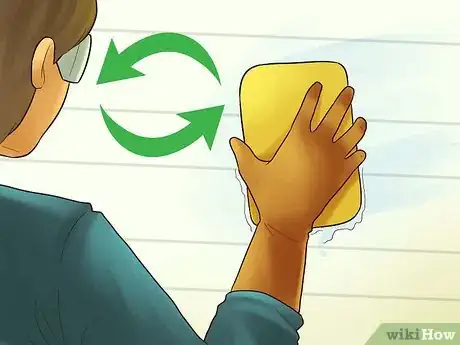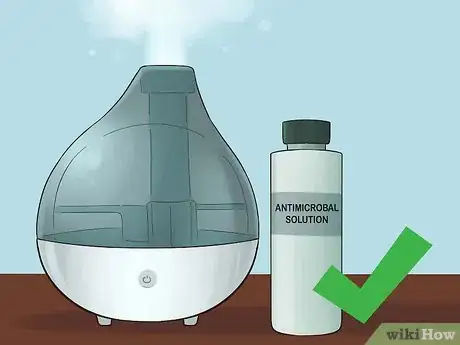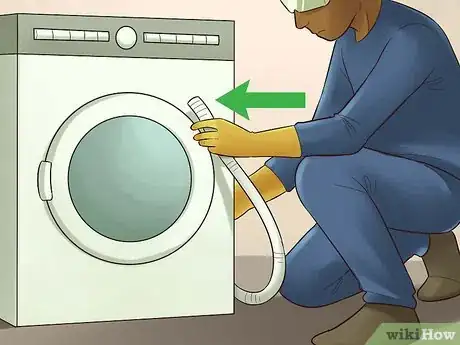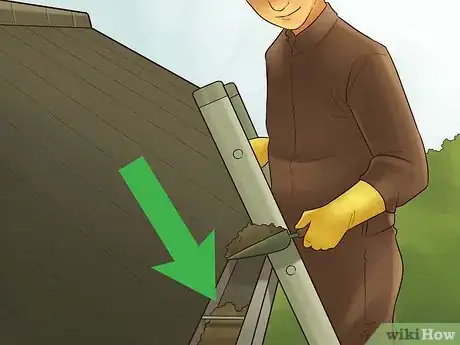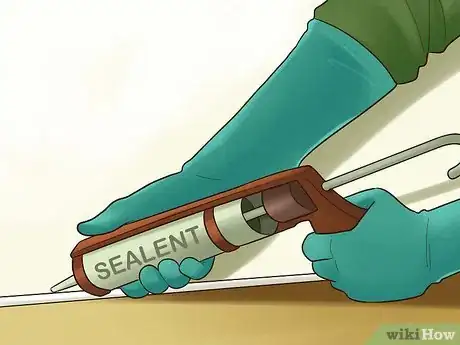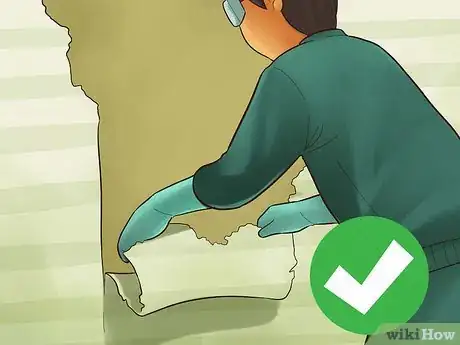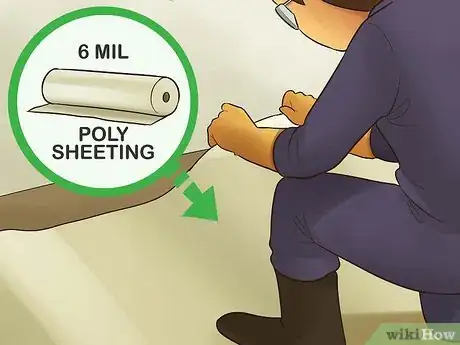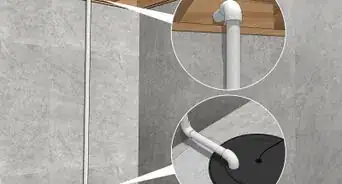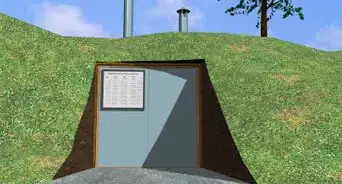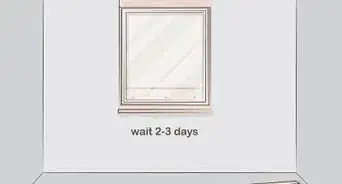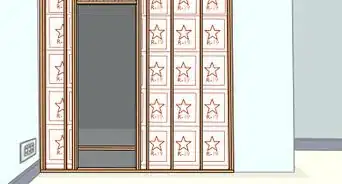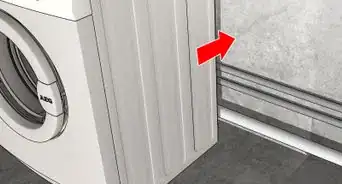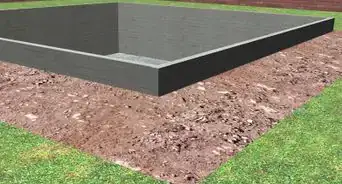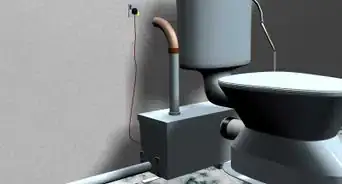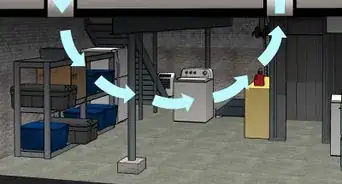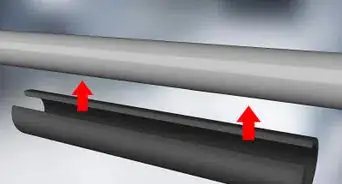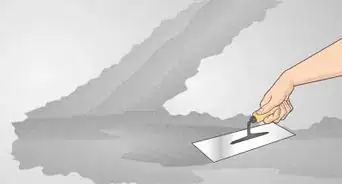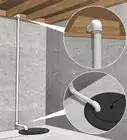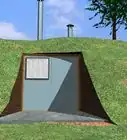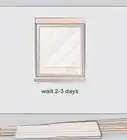This article was co-authored by Mike Kapur. Mike Kapur is a home inspector and the owner of Sonic Home Inspections, a home inspection company in Westchester, New York. With over 15 years of experience in pre-inspecting properties, Mike specializes in mold, radon, asbestos, lead, water, and air quality testing as well as hazardous materials, pest, infrared, and general home inspections. Prior to founding Sonic Home Inspections, Mike worked pre-inspecting apartments. Mike holds a BS in Accounting from Queens College and is a Certified Mold Assessor in the state of New York.
There are 10 references cited in this article, which can be found at the bottom of the page.
This article has been viewed 90,858 times.
Put on protective gear before inspecting or cleaning mold. Find out the size of the affected area, then decide if you prefer to hire a professional. To clean it yourself, apply a mold-killing cleaning agent such as diluted bleach, undiluted vinegar, or 3% hydrogen peroxide. Let the solution sit briefly, then scrub and rinse the area. Eliminate any leaks, condensation and excess humidity, since reducing moisture is the most important way to combat basement mold.
Steps
Evaluating the Scope of the Problem
-
1Put on protective gear first. Wear old clothing and long gloves that extend to the middle of your forearms. Put on an N-95 respirator, and follow the instructions that came with it to ensure a proper fit. Wear goggles without ventilation holes.[1]
- You can purchase an N-95 respirator mask online or from a hardware store for about $12 to $25.
- Inspecting for mold can stir up airborne spores, so it’s important to wear protective gear.
-
2Check the HVAC system for contamination. Look for mold near the intake of your heating/ventilation/air conditioning system. Inspect inside the air ducts for a musty smell or noticeable mold growth. If all you find is dust in the return registers, that’s normal and you can vacuum or remove the registers to clean them.[2]
- If you don’t find any signs of mold, and no one in your household has unexplained illness, symptoms or allergies, your air ducts are most likely not contaminated.
- If you suspect contamination in your HVAC system, turn it off and don’t run it until you have the air ducts cleaned.[3]
Advertisement -
3Recognize when a professional service is needed. Contact a professional mold removal service if you find a strong odor, damage from contaminated water, and/or areas of mold larger than ten square feet (three meters), approximately three feet by three feet (91 cm by 91 cm). Read online reviews or obtain a referral for a qualified mold remediation contractor. Check their references and ask what EPA recommendations or other professional guidelines they’ll follow.[4]
- For large areas of mold, the basement and HVAC may need to be sealed off with plastic sheeting.
- Contaminated water can occur from flooding or sewage backup.
- A strong, moldy odor may indicate unseen mold growth behind walls, under flooring or beneath baseboards.
- You may be able to obtain a free estimate detailing what services are needed. The average cost for mold remediation is about $7,500.[5]
Removing the Mold
-
1Ensure proper working conditions. Ventilate your working area as much as possible. Open windows and doors, and use fans. Wear the same protective gear you did when you were inspecting: old clothing, long gloves, an N-95 respirator, and goggles without ventilation holes.[6]
-
2Remove contaminated items. Take any moveable items from the area outside to inspect them. Throw away disposable items like cardboard boxes. Wash and dry any contaminated clothing. Clean contaminated items before returning them to the basement, once you’ve finished cleaning the basement mold.[7]
-
3Clean or replace carpeting, if applicable. If you see visible mold on the surface of carpeting, sweep it with a broom to loosen the mold. Use a vacuum with a HEPA filter to vacuum the carpeting. Apply a cleaning solution and scrub the area. Allow the carpet to dry completely.
- If the carpet is removable, let it dry outside in the sunshine. If not, turn fans on to help the carpet dry.
- Dispose of any carpeting that’s been soaked through.[9]
-
4Choose a cleaning agent. Perform a small test area first on each item you’re cleaning to make sure the cleaning agent doesn’t damage it. You can clean mold with diluted bleach, diluted Borax, undiluted vinegar, a baking soda solution, or 3% hydrogen peroxide.[10] Depending on which method you choose, you can use a bucket or spray bottle to hold the solution.[11]
- For hard surfaces, combine a gallon of water with a cup of bleach, or one part bleach to sixteen parts water. For porous surfaces, try one part non-ammonia, liquid dish detergent, ten parts bleach and twenty parts water.
- To use baking soda, combine 1/4 to 1/2 teaspoon (1 to 2 mL) baking soda with a full spray bottle of water. Alternately, combine 1/2 cup (118 mL) baking soda with one cup (250 mL) of water and one tablespoon (15 mL) of mild liquid detergent.
- Borax is safe for porous and nonporous materials. Combine a cup (225 mL) of Borax with a gallon (4 L) of water.
-
5Apply the cleaning agent and allow it to sit. Use a spray bottle, a sponge or a rag dipped in your cleaning agent to apply it to the moldy area. Allow the cleaning agent to sit for five to fifteen minutes.[12]
-
6Scrub the area with the cleaning agent. Use a scrub brush or cloth to scrub the area with your chosen cleaning agent. Make sure to get into hard-to-see areas like cracks and crevices as well as the visible surfaces. Rinse the brush or cloth often to avoid spreading mold residue.[13]
-
7Rinse the area with clean water. Use a clean sponge or rag to wipe down the area with water. Change the rinse water regularly to keep it clean. Once the area dries, check for any mold you may have missed. If you still see signs of mold, repeat the scrubbing and rinsing process.[14]
Reducing Moisture
-
1Control the humidity. Increase the ventilation in your basement. Run air conditioners and dehumidifiers as needed.[15] If you have a humidifier, clean and treat it with an antimicrobial solution.[16]
- You can increase ventilation by using oscillating fans, opening windows and doors, and using a dehumidifier.
- You can purchase antimicrobial solutions online or at a hardware store.
-
2Check major appliances for proper venting and drainage. Make sure your large appliances, such as your washer and dryer, are vented. Your washing machine needs a floor drain and secure hose connections. Install a pan for overflow right under the machine, if needed.[17]
-
3Check your gutters and pipes. Ensure that your gutters discharge water at least six feet away from exterior walls. If your gutters are sending water too close to the home, install gutter extenders. Look for leaky pipes, and repair your piping, if needed.[18]
- Sump pumps should discharge water at least twenty feet from your home.
-
4
-
5Check your air conditioning pan and duct joints. Clean the condensation pan under the coil of your central AC with a 1/2 percent bleach solution. Check that the continuous drain is functioning. If you find any leaky duct joints, seal them with flexible mastic, which you can purchase at a heating and cooling supply store.[21]
- Clean the AC condensation pan before each cooling season.
-
6Ensure that you have proper insulation and waterproofing. Make sure your roof is insulated, and there are no leaks in your roof or ceiling. Insulate your windows with proper flash and caulking to minimize condensation. Waterproof and insulate exterior walls.[22]
- You can have your basement waterproofed professionally, or apply sealant to your walls and floors. Fill in any cracks with a waterproof filler.
-
7Replace vinyl wallcoverings, if applicable. Remove any vinyl wallcoverings, which trap humid air between drywall and the wallpaper. After fully cleaning the area, use paint or wall coverings with permeable paper backings instead.[23]
-
8Cover any bare earth flooring. Unfinished basements or crawlspaces with bare earth flooring transmit a lot of moisture. Have flooring put in, or do it yourself by covering the area with 6-mill poly sheeting. Make sure the basement is heated, cooled and humidified equally with the rest of the house.[24]
Expert Q&A
Did you know you can get expert answers for this article?
Unlock expert answers by supporting wikiHow
-
QuestionWhat do I do if I have mold in my basement?
 Mike KapurMike Kapur is a home inspector and the owner of Sonic Home Inspections, a home inspection company in Westchester, New York. With over 15 years of experience in pre-inspecting properties, Mike specializes in mold, radon, asbestos, lead, water, and air quality testing as well as hazardous materials, pest, infrared, and general home inspections. Prior to founding Sonic Home Inspections, Mike worked pre-inspecting apartments. Mike holds a BS in Accounting from Queens College and is a Certified Mold Assessor in the state of New York.
Mike KapurMike Kapur is a home inspector and the owner of Sonic Home Inspections, a home inspection company in Westchester, New York. With over 15 years of experience in pre-inspecting properties, Mike specializes in mold, radon, asbestos, lead, water, and air quality testing as well as hazardous materials, pest, infrared, and general home inspections. Prior to founding Sonic Home Inspections, Mike worked pre-inspecting apartments. Mike holds a BS in Accounting from Queens College and is a Certified Mold Assessor in the state of New York.
Certified Mold Assessor & Home Inspector, Sonic Home Inspections
-
QuestionIs the mold in my basement dangerous?
 Dario RagnoloDario Ragnolo is the Owner and Founder of Tidy Town Cleaning, a home cleaning service in Los Angeles, California. His business specializes in residential & commercial cleaning. He is a second generation home cleaning expert, who grew up around his parents cleaning business in Italy.
Dario RagnoloDario Ragnolo is the Owner and Founder of Tidy Town Cleaning, a home cleaning service in Los Angeles, California. His business specializes in residential & commercial cleaning. He is a second generation home cleaning expert, who grew up around his parents cleaning business in Italy.
House Cleaning Professional
-
QuestionWill a dehumidifier kill mold?
 Dario RagnoloDario Ragnolo is the Owner and Founder of Tidy Town Cleaning, a home cleaning service in Los Angeles, California. His business specializes in residential & commercial cleaning. He is a second generation home cleaning expert, who grew up around his parents cleaning business in Italy.
Dario RagnoloDario Ragnolo is the Owner and Founder of Tidy Town Cleaning, a home cleaning service in Los Angeles, California. His business specializes in residential & commercial cleaning. He is a second generation home cleaning expert, who grew up around his parents cleaning business in Italy.
House Cleaning Professional No, but it will reduce moisture in the area to help prevent mold from returning. It's very important to reduce the amount of humidity that's in your basement in order to keep the mold from coming back, and a dehumidifier can help with that. If your basement has an outside door or windows, you can also open those to try to ventilate it.
No, but it will reduce moisture in the area to help prevent mold from returning. It's very important to reduce the amount of humidity that's in your basement in order to keep the mold from coming back, and a dehumidifier can help with that. If your basement has an outside door or windows, you can also open those to try to ventilate it.
Warnings
- Never mix bleach with products containing ammonia or other chemical cleaning agents. Don’t mix multiple cleaning solutions unless you’ve confirmed that it’s safe to do so.⧼thumbs_response⧽
- Clean all moldy surfaces before applying any paint or caulk.⧼thumbs_response⧽
- Don’t touch any mold or contaminated items with your bare hands.⧼thumbs_response⧽
- Mold can be cleaned, but may cause permanent staining or cosmetic damage.⧼thumbs_response⧽
- Consult with a health professional before starting cleanup if you have concerns about your health, such as allergies or respiratory problems.[25]⧼thumbs_response⧽
- If you’re using a strong disinfectant, such as bleach, wear gloves made from natural rubber, nitrile, neoprene, polyurethane or PVC.[26]⧼thumbs_response⧽
Things You'll Need
- Old clothing
- Long gloves
- N-95 respirator
- Safety goggles
- Cleaning agent of choice
- Bucket or spray bottle
- Scrub brush or rags
- Clean sponge or cloth
References
- ↑ https://www.epa.gov/mold/brief-guide-mold-moisture-and-your-home#tab-4
- ↑ https://www.epa.gov/indoor-air-quality-iaq/should-you-have-air-ducts-your-home-cleaned#deciding
- ↑ https://www.epa.gov/mold/mold-cleanup-your-home
- ↑ https://www.epa.gov/mold/mold-cleanup-your-home
- ↑ http://www.homeadvisor.com/cost/environmental-safety/remove-mold-and-toxic-materials/
- ↑ https://www.fema.gov/pdf/rebuild/recover/fema_mold_brochure_english.pdf
- ↑ http://removemoldguide.com/do-it-yourself/basement-mold-removal/
- ↑ https://www.familyhandyman.com/cleaning/mold-and-mildew/how-to-combat-mold-and-mildew/view-all
- ↑ https://www.fema.gov/pdf/rebuild/recover/fema_mold_brochure_english.pdf
- ↑ Mike Kapur. Certified Mold Assessor & Home Inspector, Sonic Home Inspections. Expert Interview. 19 August 2020.
- ↑ http://removemoldguide.com/do-it-yourself/how-to-get-rid-of-mold/
- ↑ http://removemoldguide.com/do-it-yourself/how-to-get-rid-of-mold/
- ↑ http://removemoldguide.com/do-it-yourself/basement-mold-removal/
- ↑ http://removemoldguide.com/do-it-yourself/basement-mold-removal/
- ↑ Mike Kapur. Certified Mold Assessor & Home Inspector, Sonic Home Inspections. Expert Interview. 19 August 2020.
- ↑ https://www.familyhandyman.com/cleaning/mold-and-mildew/how-to-combat-mold-and-mildew/view-all
- ↑ https://www.familyhandyman.com/cleaning/mold-and-mildew/how-to-combat-mold-and-mildew/view-all
- ↑ http://moldmanusa.com/106-tips-about-mold-mold-remediation-mold-removal-mold-testing-and-mold-prevention/
- ↑ Mike Kapur. Certified Mold Assessor & Home Inspector, Sonic Home Inspections. Expert Interview. 19 August 2020.
- ↑ http://moldmanusa.com/106-tips-about-mold-mold-remediation-mold-removal-mold-testing-and-mold-prevention/
- ↑ https://www.familyhandyman.com/cleaning/mold-and-mildew/how-to-combat-mold-and-mildew/view-all
- ↑ https://www.familyhandyman.com/cleaning/mold-and-mildew/how-to-combat-mold-and-mildew/view-all
- ↑ https://www.familyhandyman.com/cleaning/mold-and-mildew/how-to-combat-mold-and-mildew/view-all
- ↑ https://www.familyhandyman.com/cleaning/mold-and-mildew/how-to-combat-mold-and-mildew/view-all
- ↑ https://www.epa.gov/mold/mold-cleanup-your-home
- ↑ https://www.epa.gov/mold/brief-guide-mold-moisture-and-your-home#tab-4
About This Article
Before cleaning mold in a basement, remove and clean any contaminated items, such as boxes, furniture, or clothing. To remove mold from hard surface use a solution of water and bleach to scrub the affected areas. Alternatively, for porous surfaces, try a mixture of liquid dish detergent, water, and bleach. If there's visible mold on the carpet, sweep it to loosen the mold, then vacuum it up. To learn how to reduce moisture that causes mold, keep reading!
